VOL- 2, ISSUE- 1, PUNE RESEARCH TIMES (ISSN 2456-0960) JIF 2.07
2.1 TIMES
Area of Article : ALL
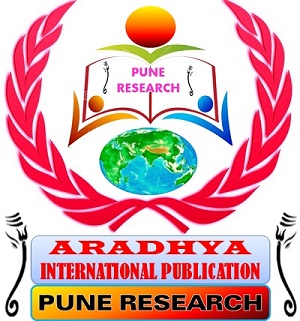
VOL- 2, ISSUE- 1, PUNE RESEARCH TIMES (ISSN 2456-0960) JIF 2.07
2.1 TIMES

VOL- 2, ISSUE- 1, PUNE RESEARCH TIMES (ISSN 2456-0960) JIF 2.07
2.1.1 TIMES

Education is
the backbone of every society in this world. But what matters the most is the
quality education- a dream for many. In India, out of the 229 million students
enrolled for class I – XII, only few receive quality education with good
teachers and teaching aids. According to UNICEF specialist, 40-50 per cent of
the children from 15-18 years age group are dropping out of schools. These
drop-outs become child-laborers denying themselves access to quality education
and professional skills.
VOL- 2, ISSUE- 1, PUNE RESEARCH TIMES (ISSN 2456-0960) JIF 2.07
2.1.2 TIMES
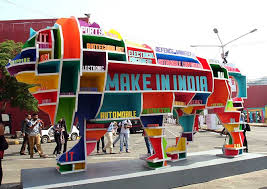
The Make in India initiative was launched by Prime Minister against the backdrop of this crisis, and quickly became a rallying cry for India’s innumerable stakeholders and partners. It was a powerful, galvanizing call to action to India’s citizens and business leaders, and an invitation to potential partners and investors around the world. Promoting entrepreneurship has become the need of the hour as it can endow with solution related to various existing problems and at the same time it is associated with multiple paybacks. Thus it becomes necessary to study the need of the entrepreneurs to startup various ventures and list of assistance to be provided by the Make in Indian Campaign.
Keywords: Entrepreneurship, Make-in India, Startups.
VOL- 2, ISSUE- 1, PUNE RESEARCH TIMES (ISSN 2456-0960) JIF 2.07
2.1.3 TIMES

Social networking made internet as top
priority list daily activity. This is a recent invention that has gain
popularity with people very fast. Social networking sites became a part of
everyday life of a person and they have brought revolutionary changes in
communication. This is mostly because it really is for the people. In the earlier
times there used to be a group of friends who sat together and did a talking
about almost everything. The Social Networking websites help the users to do
the same thing but with the technology factor included. These sites provide
different resources such as email and instant messages in one place.
Availability of these resources makes the communication easy and faster. Social
networking these days has got a huge impact on the younger generation. When we
look at the social impact of social networking sites, we find that these sites
have both positive and negative effects. Because of this fact, it is necessary
to analyze both advantage and drawbacks of social networking sites.
VOL- 2, ISSUE- 1, PUNE RESEARCH TIMES (ISSN 2456-0960) JIF 2.07
2.1.4 TIMES

With the primary objective of attracting
investments from across the globe and strengthening India's manufacturing
sector, Make in India is a major new national programme of the Government of
India designed to facilitate investment, enhance skill development, foster innovation, protect intellectual property and build best
in class manufacturing infrastructure in the country. The programme also aims
at enhancing Foreign Direct Investment and improving India’s rank on the Ease
of Doing Business index by eliminating the unnecessary laws and regulations,
making bureaucratic processes easier, making the government more transparent,
responsive and accountable. With these objectives the higher education policy
needs to be reformed so as to upgrade the development level of students to meet
the higher expectations of the industry. The paper, hence, is an attempt to
understand the growth in FDI due to Make in India initiative and also the role
of Indian Higher education in successfully applying the Make in India campaign.
The work also studies the Impact of Make in India on future Higher Education of
India.
VOL- 2, ISSUE- 1, PUNE RESEARCH TIMES (ISSN 2456-0960) JIF 2.07
2.1.5 TIMES
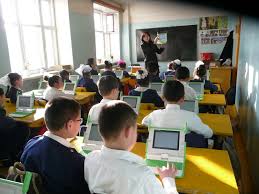
The Emerging trend of technology, often known
as Information Communication Technology (ICT). ICT refers to technologies that
provide access to information through telecommunications. ICT have becomes the
most common media in all the aspects of life. Across the past recent years, the
use of ICT has fundamentally changed the practices and procedures of all forms
of education. It is generally used to
describe the number of technology uses and can cover anything from radios, to
mobile phones, to laptops, education has used technology for centuries, from
blackboards to textbooks, Within education, ICT has begun to have a presence,
but the impact has not been as extensive as in other fields. The use of ICT in
education lends itself to more student-centered learning settings and often
this creates some tensions for some teachers and students. But with the world
moving rapidly into digital media and information, the role of ICT in education
is becoming more and more important and this importance will continue to grow
and develop in the future.
VOL- 2, ISSUE- 1, PUNE RESEARCH TIMES (ISSN 2456-0960) JIF 2.07
2.1.6 TIMES

Education in India is provided by the
public sector as well as the private sector, with control and funding coming
from three levels: central, state, and local. Under various articles of the
Indian Constitution, free and compulsory education is provided as a fundamental
right to children between the ages of 6 and 14. The ratio of public schools to
private schools in India is 7:5.
VOL- 2, ISSUE- 1, PUNE RESEARCH TIMES (ISSN 2456-0960) JIF 2.07
2.1.7 TIMES

The Corporate Social Responsibilities of business are those
responsibilities that arise in the perspective of corporate-stakeholder
relationships. Stakeholders have expectations about the behaviour and
responsibilities and duties of the business that go beyond the donation of jobs
and products or services. Two companies do not have the exact same set of responsibilities,
because they have different products, services and strategies and therefore,
different groupings of stakeholders and stakeholder interests and issues.
VOL- 2, ISSUE- 1, PUNE RESEARCH TIMES (ISSN 2456-0960) JIF 2.07
2.1.8 TIMES
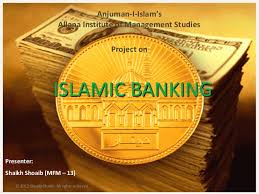
Islamic bank is based on interest free banking and permits only profit sharing based banking. In India Islamic banking institutions will play a significant role in the market due to its large Muslim population lest they are made aware of it. Islamic banking is growing at a faster rate in other parts of the world. The paper is based on secondary data. This paper will explore importance of Shariah funds and potential in Indian point of view. This paper tries to find out status of Islamic Banking and Shariah fund in India. It concludes with highlighting potentials of Shariya fund to boost the economic development of the India.
Keywords: Islamic banking. Shariah Funds Principles.
VOL- 2, ISSUE- 1, PUNE RESEARCH TIMES (ISSN 2456-0960) JIF 2.07
2.1.9 TIMES
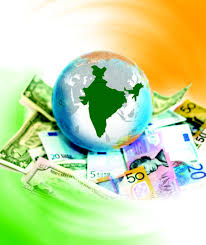
Change is the need of the hour, as the
whole world is in the transit phase and so is the economy as well as the higher
education system .The rapid growth of world population since 1950 has occurred
mostly in developing countries. This growth has been matched by more rapid
increases in gross domestic product, and thus income per capita has increased
in most countries around the world since 1950.An increase in FDI may be
associated with improved economic growth due to the influx of capital and
increased tax revenues for the host country. Host countries often try to
channel FDI investment into new infrastructure and other projects to boost
development. Greater competition from new companies can lead to productivity
gains and greater efficiency in the host country and it has been suggested that
the application of a foreign entity’s policies to a domestic subsidiary may
improve corporate governance standards. Furthermore, foreign investment can
result in the transfer of soft skills through training and job creation, the
availability of more advanced technology for the domestic market and access to
research and development resources.
VOL- 2, ISSUE- 1, PUNE RESEARCH TIMES (ISSN 2456-0960) JIF 2.07
2.1.10 TIMES
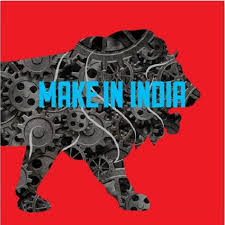
Make in India is an international
marketing campaigning slogan coined by the Prime Minister of India, Narendra
Modi to attract businesses from around the world to invest and manufacture in
India. The campaign has been concentrated to fulfill the purpose of Job
Creation, Enforcement to Secondary and Tertiary sector, Boosting national
economy, converting India to a self-reliant country and to give the Indian
economy global recognition. Make in India which is the recipe of PM Narendra
Modi’s aims to make India the manufacturing hub of the world. The idea of
utilizing cheap labor to produce for the world is not new. The Indian
government through this initiative aims to put to use its rapidly increasing
workforce to productive use, realizing that service sector though contributing
about 55-60% of the GDP cannot be the sole driver of the economy. In this
research paper `Make in India’ an attempt has been made to review the pros and
cons of this concept and to understand the impact of it on the Indian Economy.
VOL- 2, ISSUE- 1, PUNE RESEARCH TIMES (ISSN 2456-0960) JIF 2.07
2.1.11 TIMES

In today’s changing world regarding industry and the job market, there is now an intense need for skilled workers. Over recent years, the definition of 'skill' in India, and the world in general, has changed. The youth population in India is being added around 28 million every year. More than 50 per cent of its population is below the age of 25 and more than 65 per cent are aged below 35. In 2020, the average age of an Indian will be expectedly 29 years. There are also alternative terms in use, such as competencies, abilities or capabilities, there are some attributes which overlap between all of these and other attributes, such as knowledge, understanding, and aspects of personality. It is the quality of education that decides the quality of human resources of the country. The Indian education system provides various courses and curriculum within courses for skill development of students, specially management students as it in the name, but the curriculum aims only on point grades evaluation not on holistic development of the student. This paper attempts to analyze in brief certain courses available for skills development in management education.
Keywords: skills development, personality development, credits, concurrent evaluation.
VOL- 2, ISSUE- 1, PUNE RESEARCH TIMES (ISSN 2456-0960) JIF 2.07
2.1.12 TIMES
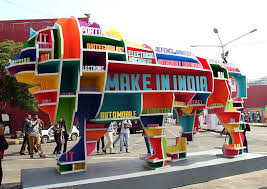
The paper explores need, challenges of
privatization of higher education in India. The last two decades had witnessed
unprecedented growth in institutes of higher education primarily due to private
sector participation. The private sector has contributed significantly in
increasing the gross enrolment ratio (GER) from 9.5% in 2005 to 14% in 2015.
The private sector is expected to provide useful contribution in achieving the
target of 31% GER by 2020 set by government of India. Though the private institutes
have grown in
number they are
not able to
attract the high ranking
students. The issues
of quality, access,
equity, inclusiveness require
urgent attention of the
stakeholders. Unemplyability of graduates is a cause of concern. Proper
regulatory framework supported by mutual
trust and accountability is
important for the
establishment of vibrant global
private higher education
institutions which can
ensure quality, access,
and inclusiveness.
Keywords: Gross Enrolment Ratio, unemployability, Private sectors, inclusiveness, higher Education.
VOL- 2, ISSUE- 1, PUNE RESEARCH TIMES (ISSN 2456-0960) JIF 2.07
2.1.13 TIMES

Over the last decade, the Education
sector in India has grown leaps and bounds. Higher Education in India has
evolved in distinct and divergent streams with each stream monitored by an apex
body, indirectly controlled by the Ministry of Human Resource Development.
India has one of the world's largest education systems, which includes 1.3
million schools, 30,000 colleges and 542 universities.. The 433 universities/
institutions are mostly funded by the state governments. However, there are 44
important universities called Central universities, which are maintained by the
Union Government and because of relatively large funding, they have an edge
over the others. According to the recent data revealed by the Department of
Industrial Policy and Promotion (DIPP), foreign investors have contributed more
than US$200 million in Indian education sector and the number is going to
increase steeply in coming years as well. The present law allows 100% FDI on
education sector. The opportunity for foreign companies and private players is
enormous in the education space of India. Three dimensional opportunities are available
for the foreign investors in schools vocational training, higher
education. Thus, it becomes imperative
to study the growth prospects of foreign investors in education sector.
Keywords: FDI, Higher education, HRD
VOL- 2, ISSUE- 1, PUNE RESEARCH TIMES (ISSN 2456-0960) JIF 2.07
2.1.14 TIMES

While starting any type of
construction that construction needs the BASE. The more the base is powerful
the more and more construction you can do. And that construction can face a lot
of climatic problems for a longer period. Same things happen if you are
building someone’s future. And if it is about education the base should be
strong or powerful. There are number of educational institutes in India. These
institutes play vital role in mould of students’ future. They always try to
give the best to their students through the education. EDUCATION is not only an instrument of
enhancing efficiency but also an efficient tool. India is a home for education.
There are over 620 universities and 45,000 colleges of various types in the
country. Most of these educational institutions need recognition by a competent
body/ regulatory authority that are supported by the government of India, state
governments or by societies.
VOL- 2, ISSUE- 1, PUNE RESEARCH TIMES (ISSN 2456-0960) JIF 2.07
2.1.15 TIMES

IP Convergence network used to sent
voice, video and data over the network. But this new change has brought lots of
challenges for the network professional to secure the critical Assets and Data
in an organization. This paper presents the vulnerabilities or threats
associated with the Internet Protocol (IP) Convergence Network and possible
countermeasures for the same.
Keywords: IP Convergence Network, Vulnerabilities, Threats and Countermeasures, Wired IP Network, Wireless Networks, Voice over IP (IP Telephony), Video over IP Systems
VOL- 2, ISSUE- 1, PUNE RESEARCH TIMES (ISSN 2456-0960) JIF 2.07
2.1.16 TIMES

India holds an important place in the
global education industry. The country has more than 1.4 million schools with
over 227 million students enrolled and more than 36,000 higher education
institutes. India has one of the largest higher education systems in the world.
However, there is still a lot of potential for further development in the
education system.
VOL- 2, ISSUE- 1, PUNE RESEARCH TIMES (ISSN 2456-0960) JIF 2.07
2.1.17 TIMES
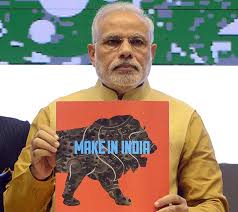
E-commerce is the future of retail and
it will play a big role in India specifically. There are several scenarios that
could describe how India will be 10 years from now and what role e-commerce
will play in India of tomorrow. Let’s try to flow with the thoughts of our
Government and create a positive case. E-commerce will play a major role in
Indian retail, probably more than anywhere else in the world.
VOL- 2, ISSUE- 1, PUNE RESEARCH TIMES (ISSN 2456-0960) JIF 2.07
2.1.18 TIMES
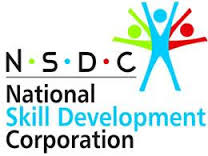
India has the advantage of “demographic dividend”,
having more of young population as compared to aged population. The nation’s
population pyramid is forecasted to hump across 15-59 years of age in the
coming years till 2040. India therefore has limited time frame to utilize this
demographic dividend and utilize it to overcome skill shortages. The mission is simple to harness this
demographic dividend as an opportunity and change old apprehended perception about
skilling. Skill training is always considered as a last resort for those who
are academically week. This notion has to be changed by reducing the gap
between industry expectations of talent and available talent in India. Need of
the hour is to synergize this available resource through a platform of skill
development that is NSDC initiatives. Imbibing the NSDC programs especially National
Skills Certification & Monetary rewards Scheme in management education aims
at creating an inclusive teaching environment within the classrooms and the
education system of India. The focus of the study is to analyze the skill
training programs of NSDC within the purview of management education.
Keywords: India, management education, skill development, skill training, talent, human capital, human resource.
VOL- 2, ISSUE- 1, PUNE RESEARCH TIMES (ISSN 2456-0960) JIF 2.07
2.1.19 TIMES

Education is an important factor in
determining the entrepreneurial orientation in individuals. Formal education is
positively correlated with entrepreneurship. Education and training can have
definite role in enhancing entrepreneurship in the context of a developing
country like India by enlarging the pool of entrepreneurs. During
liberalization, which started in India in 1991, India exerted greater effort to
promote and nurture entrepreneurship. Attempts at various levels have taken
place to directly or indirectly promote entrepreneurship. During the recent past
there has been a growing debate about how well educational systems specially
B-schools prepare young management graduates for Entrepreneurship. In the
present scenario this debate becomes even more relevant. Should B-Schools lay
special emphasis on entrepreneur education in their curriculum? If yes than
what is scope of this education and what opportunity will it raise? These are
some questions which need to be given serious thought...
VOL- 2, ISSUE- 1, PUNE RESEARCH TIMES (ISSN 2456-0960) JIF 2.07
2.1.20 TIMES

Encouraging entrepreneurs to start new businesses
is a priority for any government and is only increasing in importance as
nations look to grow, become self-reliant, and overcome economic uncertainty.
These are multi-dimensional objectives that can be fulfilled by promoting
entrepreneurship in any economy, but in India, they take on added significance
because of the size and age of the population. India's total population of 1.3
billion people ranks second only to China, and with 28% of those people aged 10
to 24 (28%), the country has 367 million young people that are either at the
start of their careers or soon will be (UNFPA, 2015). Hence, it is the national
interest to provide education, support, and facilities that can help guide this
large and young segment of the population towards careers in entrepreneurship
and to help them build and grow their businesses.
Keywords: Higher Education,Business,points about Make in India.
VOL- 2, ISSUE- 1, PUNE RESEARCH TIMES (ISSN 2456-0960) JIF 2.07
2.1.21 TIMES
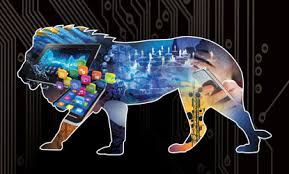
"Make In India" is a campaign launched by Narendra Modi to encourage industrialists to set up their manufacturing units in India: So, "Make in India" leads to "Made in India"! The campaign has been concentrated to fulfill the purpose of Job Creation, Enforcement to Secondary and Tertiary sector, Boosting national economy, converting the India to a self-reliant country and to give the Indian economy global recognition. The idea of utilizing cheap labor to produce for the world is not new. It’s been implemented rather successfully in East Asia and gave phenomenal results for three decades popularly called the East Asian growth miracle. Countries such as South Korea, Malaysia, Thailand, Indonesia saw a rapid fall in the poverty and unemployment numbers between late 1960’s and mid 1990’s. The Indian government through this initiative aims to put to use its rapidly increasing workforce to productive use, realizing that service sector though contributing about 55-60% of the GDP cannot be the sole driver of the economy. The campaign has been concentrated to fulfill the purpose of Job Creation, Enforcement to Secondary and Tertiary sector, Boosting national economy, converting the India to a self-reliant country and to give the Indian economy global recognition.
In the present paper an attempt has been made to throw some light on the concept of `Make in India’. Further, an attempt has also been made to review the advantages of this concept and the areas which are going to gain benefit specially Socio-Economic Growth and Entrepreneurship.
VOL- 2, ISSUE- 1, PUNE RESEARCH TIMES (ISSN 2456-0960) JIF 2.07
2.1.22 TIMES

India is developing country so far
Indian education system is not so developed. In this research paper the study
is conducted to know whether higher education institutions might also be
considered as corporations and help in different areas for development of
education system. Today, education faces the rising challenges of standardized
testing, strained budgets, teacher retention, and global workforce competition.
Businesses have begun to take a more targeted approach in their corporate
social responsibility programs and are seeking to impact areas that have a
correlation with their own business goals. For many businesses, education is an
important part of their plans, since the needs exist in all geographic areas,
across all subject areas, and for all kinds of people.
Key words- Corporate Social Responsibility, Effects, Improvements, Profit Maximization & Profit Optimization.
VOL- 2, ISSUE- 1, PUNE RESEARCH TIMES (ISSN 2456-0960) JIF 2.07
2.1.23 TIMES
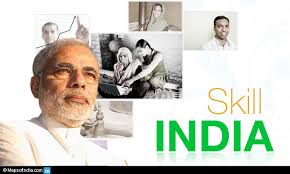
“To complete a work effectively, with
quality and within time there needs good skills”.
Today government support to the Entrepreneurship Development through Make in India, Start up India, stand up India and other various schemes. And to develop the entrepreneurship government provides the various types of training and skill development programs to the people who wanted to start their business, entrepreneurs, to start their business and develop their business successfully.
This paper focused on the Skill development programs provided by the Government of India in India for the purpose of Entrepreneurship Development. The research Paper is based on the secondary data which is available on the websites, research papers, books, articles.
Key words: Skill development, Entrepreneurship development, training, start ups
VOL- 2, ISSUE- 1, PUNE RESEARCH TIMES (ISSN 2456-0960) JIF 2.07
2.1.24 TIMES
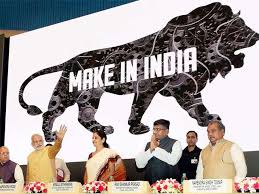
Make in India Campaign is a major initiative undertaken by the government of India to promote companies an invest in manufacturing sector. The campaign was launched by Prime Minister Narendra Modi on 25th September 2014. This campaign is an attempt to keep India’s money in India. Startups in India have never got the opportunity to pick the smoother route. It was difficult to gather funds and convince investors and leaders to get engaged. Make in India Campaign ignites a hope to these Issues. The role of government is remarkable towards youth entrepreneurs of India. The incentives introduced by government of India motivate and boost the youth to get into entrepreneurship and do their own business in India.
Key words – Make in India Campaign, Government, Youth Entrepreneurs, and Entrepreneurship.
VOL- 2, ISSUE- 1, PUNE RESEARCH TIMES (ISSN 2456-0960) JIF 2.07
2.1.25 TIMES
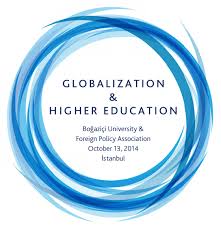
"Globalization is the flow of technology, economy, knowledge, people, values ideas... across borders & globalization affects each country in different way due to a nation's individual history, tradition, culture & priorities." Basically Internationalization of higher education is one of the way a country responds to the impact of globalization yet at the same time respects the individuality of the nation. Thus internationalization & globalization are seen as different but dynamically linked concepts. Globalization impacts all aspects of society. Higher education may be one of the most affected by global trends , and economics and business contents seem particularly influenced by them. Otherwise, these fields, as social sciences, are framed by the culture of each region.
VOL- 2, ISSUE- 1, PUNE RESEARCH TIMES (ISSN 2456-0960) JIF 2.07
2.1.26 TIMES

An effort to emphasize that
performance management in Educational organization or educational
institution plays three vital roles for
achieving high performance with the help of B, D & R (Being, Doing and
Relating formula). The paper is focuses on Performance Management In
Educational Institution.
Key words: Educational institution, Performance, B,D & R, etc
VOL- 2, ISSUE- 1, PUNE RESEARCH TIMES (ISSN 2456-0960) JIF 2.07
2.1.27 TIMES
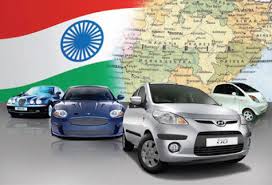
The Indian automobile industry has
emerged stronger from the recent global downturn, and sales across all segments
have seen record breaking numbers in the recent past. While the Indian industry
has much to look forward to, by way of steady growth in both domestic and export markets, there are some clear
challenges accompanying the opportunities in greener vehicles and alternative mobility. In order to capitalize on these opportunities, the industry needs to
develop or acquire technologies and
capabilities to produce vehicles that meet future market needs.The government for its part has much to do to ensure the growth trends are maintained, and encourage the development of
greener vehicles, while also improving
compliance to even existing environmental standards. This paper attempts to
capture how the Indian automobile
industry is expected to develop in the longer
term, and what role each
stakeholder needs to fulfill in order to
be geared up for evolving requirements.
Keywords: Automobile, Globalisation, Green Fuel, Hybrid Fuel, Rural Consumers
VOL- 2, ISSUE- 1, PUNE RESEARCH TIMES (ISSN 2456-0960) JIF 2.07
2.1.28 TIMES

The Online Trade market is thriving
and poised for robust growth in Asia. There are players who made a good
beginning. Their success depends on their understanding of the market and
offering various types of features. This paper gives an overview of the future
of Online Trade in India and discusses the future growth segments in India’s
E-Commerce. Also find out various factors that would essential for future
growth of Indian E-commerce. And represent the various opportunities for
retailers, wholesalers, producers and for people. In this paper we found that
the Overall Online Trade will increase exponentially in coming years in the
emerging market of India.
VOL- 2, ISSUE- 1, PUNE RESEARCH TIMES (ISSN 2456-0960) JIF 2.07
2.1.29 TIMES

Indian education sector is one of the pillars of Indian Economy and many global players are willing to enter into it. It has been stared growing after implementation of 1991 New Economic policy, as the policy focused on development in education sector. In achievement of Human development education plays vital role in this context. Contribution of capital has increased in this regards and opened the sources of capital investment from foreign countries. Education sector is now globalised and FDI has been motivated by the government. According to Deloitte, a global consultancy firm's report, India which ranks third after china and united states in terms of higher education enrollment requires more FDI in this sector in order to meet its target of doubling its gross enrollment ratio by 2020. The government has set an aggressive target of achieving 30 percent in higher education by 2020 from the current level of 15 percent. The role of private sector in higher education has significantly increased in the last decade along with public sector. This paper studies the need and importance of FDI in education sector .It also deals with the impact and prospects of FDI in education sector in Indian economy. This paper has major implications for educationists who intend to reap the benefits of FDI as well as Government who need to frame suitable policies.
Key words: Foreign Direct Investment, Higher Education, Foreign Educational Institutions
VOL- 2, ISSUE- 1, PUNE RESEARCH TIMES (ISSN 2456-0960) JIF 2.07
2.1.30 TIMES
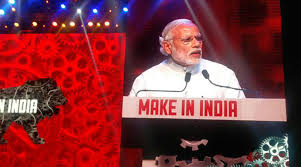
Prime Minister Narendra Modi has taken
various initiative for growth and development of India. Prime Minister taken couple
initiative like Digital India, Skill Development in India, Demonetisation,
Cashless economy in India, Make in India to strengthen the economy of India. Make in India focus on various sector
of economy in that education sector is important one. He has taken various step
make policy to promote education system and build the nation.
This paper focus on role of educational Institutes in building nation under Make in India Concept. It also studies the Impact of Make in India on future of education in India.
Keywords: - Digital India, Skill Development in India, Demonetization, Cashless economy in India, Make in India.
VOL- 2, ISSUE- 1, PUNE RESEARCH TIMES (ISSN 2456-0960) JIF 2.07
2.1.31 TIMES

Cloud Computing, also known as
'on-demand computing', is a kind of Internet-based computing, where shared
resources, data and information are provided to computers and other devices
on-demand. It is a model for enabling ubiquitous, on-demand access to a shared
pool of configurable computing resources. Cloud Computing security and privacy
are some of the biggest cloud computing issues. Secure your data and ensure
your cloud compliance strategy with this primer. As cloud computing is
achieving increased popularity, concerns are being voiced about the security
issues introduced through the adoption of this new model. This paper is an
attempt to discuss and underline major security threats in Cloud Computing
based system simply Refuge in Cloud Computing.
Keywords: Cloud Computing, Potential Issues, Types of Cloud Computing, Implementing of Could Management Risk.
VOL- 2, ISSUE- 1, PUNE RESEARCH TIMES (ISSN 2456-0960) JIF 2.07
2.1.32 TIMES
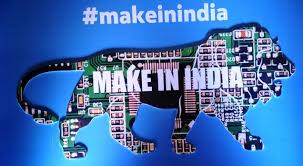
Make in India - the entire country
seems like it is being swept away with this new wave of inspiration in the
business sector. The “Make in India” program was kicked off in September 2014.
It is a national program designed for India to make it into a global
manufacturing hub and transforming it into a vibrant economy. The major
objective behind the initiative is to focus on the 25 sectors of the economy
for job creation and skill enhancement. The mission is to manufacture in India
and sell the products worldwide. Some of the key sectors focused upon are:
automobiles, chemicals, IT, pharmaceuticals, textiles, ports, aviation,
leather, tourism and hospitality, wellness, railways, design manufacturing,
renewable energy, mining, bio-technology and electronics. This research is
carried out to analyze the awareness of this campaign among the students and
how the students are responding to this challenge.
Keywords: Make in India, Manufacturing, and Awareness among the students.
VOL- 2, ISSUE- 1, PUNE RESEARCH TIMES (ISSN 2456-0960) JIF 2.07
2.1.33 TIMES

The Indian Education system has lacked
in creating skilled development of the youths despite of increased in
educational institution in India. Our youths have lack behind of getting better
employments; the reason behind it is because of not acquiring specific skills
required for the getting job good opportunities. India is one of the youngest
nation in the world having 62% of the population between age group of 15-59
years.
This shows an opportunity for India. India needs to equip to improve the skill and knowledge of youths for enhancement of productivity of youths for making India a developed nation.
VOL- 2, ISSUE- 1, PUNE RESEARCH TIMES (ISSN 2456-0960) JIF 2.07
2.1.34 TIMES
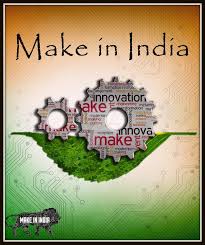
Devised to transform India into a
global design and manufacturing hub, Make in India was a timely response to a
critical situation: by 2013, the much-hyped emerging markets bubble had burst,
and India’s growth rate had fallen to its lowest level in a decade. The Make in
India initiative was launched by Prime Minister in September 2014 as part of a
wider set of nation-building initiatives. The promise of the BRICS Nations
(Brazil, Russia, India, China and South Africa) had faded, and India was tagged
as one of the so-called ‘Fragile Five’. Global investors debated whether the
world’s largest democracy was a risk or an opportunity. India’s 1.2 billion
citizens questioned whether India was too big to succeed or too big to fail.
India was on the brink of severe economic failure. The need to raise the global
competitiveness of the Indian manufacturing sector is imperative for the
country’s long term-growth. The National Manufacturing Policy is by far the
most comprehensive and significant policy initiative taken by the Government.
The policy is the first of its kind for the manufacturing sector as it
addresses areas of regulation, infrastructure, skill development, technology,
availability of finance, exit mechanism and other pertinent factors related to
the growth of the sector.
VOL- 2, ISSUE- 1, PUNE RESEARCH TIMES (ISSN 2456-0960) JIF 2.07
2.1.35 TIMES

Skill Development refers to the larger
objective of equipping an individual with marketable skills, however, in recent
times skill development has been largely used in the context of technical /
vocational training. The paper focuses on Skill Development in indian Context
in various perspective.
VOL- 2, ISSUE- 1, PUNE RESEARCH TIMES (ISSN 2456-0960) JIF 2.07
2.1.36 TIMES
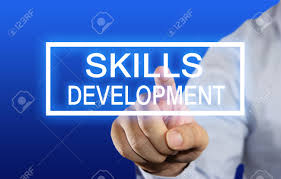
Skills are the essence of a tradesman.
It is essential for the masses to get themselves trained as per the need of the
market. India has a vast potential of human resources and needs that can be met
as per the need of the market. This happens so due to the population and vast
expanse of the Nation. There are various skills that can be categorized as per
the masses I have attempted to brief them in this article of mine.
VOL- 2, ISSUE- 1, PUNE RESEARCH TIMES (ISSN 2456-0960) JIF 2.07
2.1.37 TIMES

The term “employee turnover” is a
crucial metric that's usually central to organizations workforce planning and
strategy. the explanations why staff leave their current positions; not simply
the actual fact that they leave have crucial implication s for future retention
rates among current staff, job satisfaction and employee engagement and an organization’s
ability to draw in proficient folks for job vacancies. The impact of turnover
has received substantial attention by senior management, human resources
profession als and construction engineers particularly project engineers in
construction projects. It’s tried to be one among the foremost expensive and
ostensibly intractable human resource challenges braving many organizations
globally. The aim of this analysis is so, to seek out the particular reasons
behind turnover and its damaging effects on the development industries in
Kerala. To explore turnover in larger detail, this text can examine the most
sources of turnover rate, its effects and advocate some ways on however a
company will retain staff and scale back turnover rate in housing industry in
Kerala. The results of this study area unit expected to be helpful for numerous
construction firms for taking remedial measures to scale back the worker
turnover that is the major resource in determining the general success of a
project.
Keywords: Employee
turnover, Staff turnover, Employee turnover in construction, Causes and effects
of employee turnover, Employee retention strategy.
VOL- 2, ISSUE- 1, PUNE RESEARCH TIMES (ISSN 2456-0960) JIF 2.07
2.1.38 TIMES
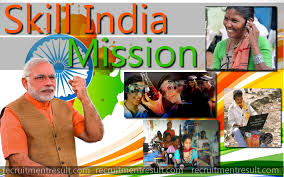
Prime Minister Narendra Modi launched
“Make in India” project, with an aim to make manufacturing a key engine for
India’s economic growth. But to make this project successful, it is important
to focus on the development of the skills of Indian labours to enable them in
getting and doing the right job. Planning Commission report suggests only10% of
the Indian workforce get formal training and against the actual industrial
training requirement of 22 million workers, only 4.3 million workers are
getting trained! To overcome this, Government of India has launched various
skill development initiatives, but faced various challenges while implementing
the same. However, few other nations like, China, Germany, South Korea, United
Kingdom and Singapore have successfully implemented their respective skill
development programs. The launch of the mission assumes significance as
"India currently faces a severe shortage of well-trained, skilled workers.
It is estimated that only 2.3% of the workforce in India has undergone formal
skill training as compared to 68% in the UK, 75% in Germany, 52% in USA, 80% in
Japan and 96% in South Korea. Large sections of the educated workforce have
little or no job skills, making them largely unemployable...
VOL- 2, ISSUE- 1, PUNE RESEARCH TIMES (ISSN 2456-0960) JIF 2.07
2.1.39 TIMES
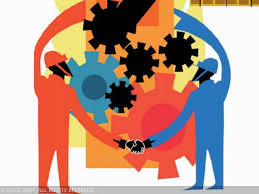
This study analyzes the impact of
government policy regime on the erudition and capability acquisition of firms
over time. Through a case study analysis of the Indian automotive industry, the
study develops three hypotheses relating policy regimes with erudition
strategies of firms. The study tests these hypotheses through a model of
erudition using a panel data for the Indian automotive industry. It finds that
speed of knowledge assimilation is more important in the liberalized policy
regime vis-à-vis protection when knowledge assimilation per se was a more
important economic goal.
Keywords: Growth, erudition, Capabilities, Industrial Policy, Automobile industry, Asia, India.
VOL- 2, ISSUE- 1, PUNE RESEARCH TIMES (ISSN 2456-0960) JIF 2.07
2.1.40 TIMES
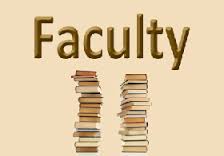
A lot of study has been conducted on
the problems caused by high turnover rate in the corporate world but little has
been done on examining the sources of faculty turnover, a high rate of faculty
turnover in an institution means increasing recruiting, selection and training
costs. Retaining talents is not the choice of employers but is also the need of
time as educational institutes are already at risk running with talent crisis.
This paper examines the faculty turnover with the help of Schematic Diagram for
Theoretical Framework, effects and forwards some strategies on how to minimize
faculty turnover in Indian Educational Institutes.
Keywords: - Attrition, Turnover Intention, Indian educational Institutes, Retention.
VOL- 2, ISSUE- 1, PUNE RESEARCH TIMES (ISSN 2456-0960) JIF 2.07
2.1.41 TIMES
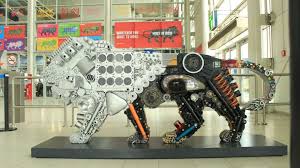
VOL- 2, ISSUE- 1, PUNE RESEARCH TIMES (ISSN 2456-0960) JIF 2.07
2.1.42 TIMES
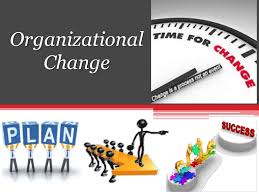
Change is one of the most important issues in
today scenario. As we know change is the rule of nature everyone who wants to
survive in this world they have to change according to the need of environment.
This theory is also applicable on the organizations each and every organization
who wants to sustain or who want to be successful in today environment they
have to manage change properly by adopting effective change management
practices. For managing organizational change successfully first each and every
organization have to understand what is organizational change. This paper
trying to explain what is organizational change.
Key words – organization, change, organizational change, change management
VOL- 2, ISSUE- 1, PUNE RESEARCH TIMES (ISSN 2456-0960) JIF 2.07
2.1.43 TIMES
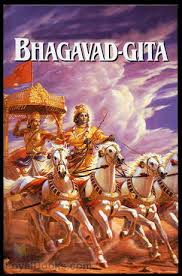
Employee’s
development increases the chance of organizational effectiveness. They
contribute significantly in the development of the organization. Employees are
adequately developed to realize their responsibilities, duties and
power-limits. Development of employees
has become order of the day. The strategies, self development and social
approach are used for employees development.
Key words: Organizational Effectiveness, Development, Employee, Strategies
VOL- 2, ISSUE- 1, PUNE RESEARCH TIMES (ISSN 2456-0960) JIF 2.07
2.1.44 TIMES

Work life
Balance is a theory that deals with the capacity of an individual regardless of
their age or gender to allow them deal with lives demands that of work and or
work actions (Hughes and Bonzionelos 2007). The aim of the study is influence
the general understanding of WLB in
finding a satisfying relationship between the interviewee’s career and their
private life. Work-family-balance means finding a satisfying relationship
between the professional and the life outside work and this appears to be the
common understanding. The methodology used was descriptive. The study used both
primary and secondary data. The primary data were collected with the help of
questionnaire. Statistical population includes
employees from Automobile Engineering companies in Chennai. 168
questionnaires were collected and the type of sampling used in the study is
Probability Sampling technique. The statistical techniques adopted are
percentage analysis, correlation and regression analysis.
Key words: quality of work life, Work actions, Age or Gender discrimination
VOL- 2, ISSUE- 1, PUNE RESEARCH TIMES (ISSN 2456-0960) JIF 2.07
2.1.45 TIMES

The
diversification of chemicals from various point and non-point sources
discharged into the environment that can mimic or antagonise the action of
hormones. These endocrine-disrupting chemicals (EDCs) can thus interact with
physiological systems and cause alterations in development, growth and
reproduction in wildlife that are exposed to them. The present study focused on
the endocrine sensitivity of the fishes collected from three different
contaminated regions of a non-perennial Holly river Vaigai, which flows across
Madurai city. The contaminated locales are Sewage confluence area (Point
source), Liquid food Effluent area (Point source), and Agricultural runoff area
(non-point source). From these three regions, the inhabiting common fish as
Oreochromis mossambicus was collected and examined for their hormone (Estrogen)
and protein (Vitellogenin) interaction. The controversial results were obtained
due to endocrine disruptive chemicals discharged from these contaminated sites
when compared to normal reproductive fish physiology.
Key words: Endocrine disruption, gonadosomatic index, hepatosomatic index, estrogen, testosterone, progesterone, gonadotropin, vitellogenin.
VOL- 2, ISSUE- 1, PUNE RESEARCH TIMES (ISSN 2456-0960) JIF 2.07
2.1.46 TIMES
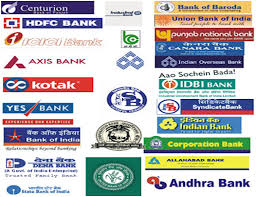
VOL- 2, ISSUE- 1, PUNE RESEARCH TIMES (ISSN 2456-0960) JIF 2.07
2.1.47 TIMES
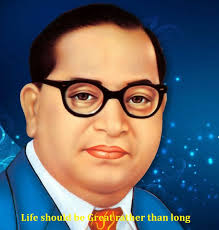
Dr. Babasahab
Ambedkar is the name that shines and shines almost as a state in the annals of
both social and political history of India. Having occupied a prominent place
in the political affairs of India before and after independence, he had earned
a preeminent place for himself, besides earning a great name for the people of
his caste and class. It was Dr. Ambedkar who had said that we have been
sterling as a nation, not just for the transfer of power and the political
independence of the nation but for the abound development of India. The strife
that they had undergone to scale higher altitudes of life of earning a
Doctorate from such a famous university like that of the Columbian University
in the United states and even being the chairman of the Drafting committee in
the country that has despired and discriminated against him on the basis of his
caste, mahas in his native state, Maharashtra and across the country.
Maharashtras is a veritable nest of the people who strove for a common cause
which is the common people’s cause Dr. Ambedkar single minded attention and
focused concentration was only on the uplift of the people of his caste and
class.
VOL- 2, ISSUE- 1, PUNE RESEARCH TIMES (ISSN 2456-0960) JIF 2.07
2.1.48 TIMES
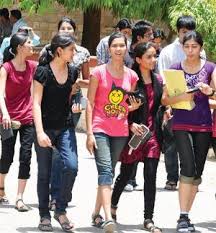
Many people participate in sports and games for fun, happiness, pleasure for health and fitness. Increased participation in sports has resulted in competition which has become an important element of modern life. Competition provides the means by which one can show one’s worth by competing successfully. For top level performance, it is very important to spot, select and nurture a budding sportsman as it is recognized by all that athletes must possess some inherent qualities, which can be developed by means of systematized and scientific training.
VOL- 2, ISSUE- 1, PUNE RESEARCH TIMES (ISSN 2456-0960) JIF 2.07
2.1.49 TIMES

This paper has
elucidate the project on career development in public sector with thoughtful
exploration to under lying theoretical assumptions of this work and the
empirical evidence it has generated. In this the research has drawn an
exploratory research of a representative sample of 120 respondents of various
levels..
VOL- 2, ISSUE- 1, PUNE RESEARCH TIMES (ISSN 2456-0960) JIF 2.07
TIMES
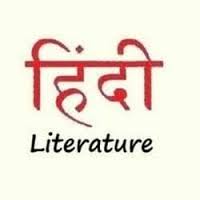
+EòÉ±É EòÒ ºÉ¨ÉºªÉÉ Ê{ÉUô±Éä EÖòUô ºÉɱÉÉå ¨Éå
VªÉÉnùÉ ¤Éfø ®ú½þÒ ½èþ * =ºÉEäò {ÉÊ®úhÉÉ¨É BEò ºÉÉ±É xɽþÓ ºÉɱÉÉÆä iÉEò
ÊnùJÉÉ<Ç näùiÉä ½èþ* VÉÉä <ºÉ +EòÉ±É EòÒ jÉɺÉnùÒ EòÉä ºÉ½þiÉÉ ½èþ =ºÉEäò
¨ÉxÉ{É®ú ¤Éb÷Ò Mɽþ®úÒ SÉÉä]õ VÉ°ü®ú ½þÉäiÉÒ ½èþ* +EòÉ±É ¨Éå {ɶÉÖ {ÉÆUôÒ
{ÉÉxÉÒ Eäò ʱÉB iÉb÷{ÉiÉä ½èþ* <xºÉÉxÉ +zÉ Eäò nùÉxÉä – nùÉxÉä Eäò
ʱÉB iÉ®úºÉiÉä ½èÆ* VÉÒ´ÉxÉɴɶªÉEò ÊSÉVÉÉå Eäò nùÉ¨É ¤ÉføiÉä ½èþÆ* ´ªÉÉ{ÉÉ®úÒ
´ÉMÉÇ JÉÉxÉä Eäò ÊSÉVÉä MÉÉänùɨÉÉå ¨Éå ¦É®úEò®ú =SÉä nùɨÉ{É®ú ¤ÉäSÉiÉä ½èþ*
SÉÉ®úÉå iÉ®¡ò ½þɽþÉEòÉ®ú Eäò ʺɴÉÉ EÖòUô xɽþÓ ºÉÚxÉÉ<Ç näùiÉÉ* VÉÉä
ºÉÉʽþiªÉEòÉ®ú <ºÉ {ÉÊ®úκlÉÊiɺÉä MÉÖVÉ®úiÉÉ ½èþ =ºÉ {ÉÊ®úκlÉÊiÉ EòÉ
ÊSÉjÉhÉ +{ÉxÉÒ ±ÉäJÉxÉÒ uùÉ®úÉ Eò®úiÉÉ ½þÒ ½èþ* ‘¡òhÉÒ¶´É®úxÉÉlÉ ®äúhÉÖ’ xÉä +{ÉxÉä Ê®ú{ÉÉäiÉÉÇVÉ ‘¦ÉÚ欃 nù¶ÉÇxÉ
EòÒ ¦ÉÚʨÉEòÉ’ ¨Éå +EòɱÉ
EòÉ ÊSÉjÉhÉ ÊEòªÉÉ ½èþ*
VOL- 2, ISSUE- 1, PUNE RESEARCH TIMES (ISSN 2456-0960) JIF 2.07
TIMES
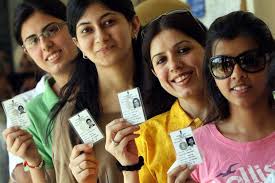
ernkj gk fuoM.kwdd izfdz;ksrhy egRokpk ?kVd vlwu
ernku dj.ks ernkjkaps vk| drZO; vkgs- dkj.k ;krwup ljdkj LFkkiu dj.;kr ;srs-
;krwup [k&;k vFkkZus ernkjkaph bPNk izfrfcachr gksr vlrs gh tckcnkjh ;’kLoh fjR;k ikj ikM.;klkBh ernkj
‘kgk.kk o tkx:d vl.ks xjtsps Bjrs- Lokra«;kuarj Hkkjrkus lkalnh; yksd’kkgh
‘kklu i/nrh fLodkjysyh vkgs- fLol gs txkrhy ,sdeso jk”Vª oxGrk loZ= izkfrfuf/kd
yksd’kkgh ‘kklu i/nrh fnlwu ;srs- izkfrfu/khd yksd’kkghr Bjkfod dkyko/khuarj
fuoM.kwdk ?ks.ks o cgqerkpk dkSy ?ksowu tursP;k bPNsyk izek.k ekuwu loZlkekU;
tursps fgr MksG;kleksj Bsowu tufgrklkBh jkT;dkjHkkj pkyfo.;kyk izk/kkUk fnys
tkrs- ernkjkP;k lfdz; jktdh; lgHkkxkojp yksd’kkghps ;’k& vi;’k vaoycwu
vlrs- 1950 iklwu rs vkti;ZaP;k Hkkjrkrhy fuoM.kwdkaps fp= ikgrk vls y{kkr ;srs
dh ]vxnh ifgY;k o nql&;k yksdlHksP;k
fuoM.kwdhr pkaxys ernku >kys i.k 50 rs 55 o”kkZr ernkukph VDdsokjh mRrjksRrj
?kljysyh fuoM.kqdkaP;k vkdMsokjho:u fnlwu ;srs dkj.k dsoG 35 VDds] 40 VDds
ernku gksowu tj tuizfrfu/kh fuoMwu ;sr vlrhy rj rs yksd’kkghP;k ln`<rslkBh
Qkjp ?kkrd Bjsy- Eg.kwup gh ernkjkaph mnkflurk tj Fkkacyh ukgh rj ;s.kk&;k
dkGkr Hkkjrkrhy yksd’kkgh gnn~ikj gksowu QWfl”Vokn fuekZ.k gks.;kl osG ykx.kkj
ukgh- R;keqGs ;s.kk&;k fuoM.kwdklkaBh rjh ernkj oxkZauh gh ekufldrk cnywu
lfdz;i.ks ernku dj.ks] dks.kR;kgh vfe”kkyk rFkk nckokyk cGh u iMrk] rjp Hkkjrkr
yksd’kkgh fVdwu jkg.;kl enr gksbZy- f’kok; jktdkj.kkps xqUgsxkjhdj.k deh gksowu
pkaxys lqf’kf{kr] lnorZuh] fuRrheku] lkekftd cka/khydh tksikl.kkÚ;k yksdkapk
Hkj.kk jktdkj.kkr fuekZ.k dj.ks gh ,d dkGkph xjt cuysyh vkgs- 25 tkusokjh gk
jk”Vªh; ernkj fnu Eg.kwu ikGyk tkrks R;kaps dkj.k tursyk vki.k ernkj vlY;kph
tkf.ko d:u ns.ks gk vkgs-
VOL- 2, ISSUE- 1, PUNE RESEARCH TIMES (ISSN 2456-0960) JIF 2.07
TIMES
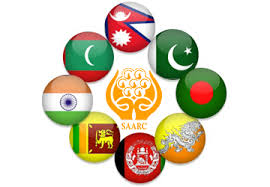
20 ´ªÉÉ ¶ÉiÉEòÉiÉ {Éʽþ±ªÉÉ +ÉÊhÉ nÖùºÉªÉÉ
¨É½þɪÉÖrùÉxÉÆiÉ®ú +ÉÆiÉ®ú®úɹ]ÅõÒªÉ ¶ÉÉÆiÉiÉÉ ´É ºÉ½þªÉÉäMÉ ªÉÉ
où¹]õÒEòÉähÉÉiÉÚxÉ EòɽþÒ IÉäjÉÒªÉ ºÉÆPÉ]õxÉÉ =nùªÉÉºÉ +ɱªÉÉ. nùÊIÉhÉ
+ÉʶɪÉÉ<Ç nä¶ÉɨÉvªÉä |ÉÉnäùʶÉEò ºÉ½þEòɪÉÉÇuùÉ®äú Ê´ÉEòɺÉ
½þÉähªÉÉEò®úÒiÉÉ BJÉÉnùÒ ºÉÆPÉ]õxÉÉ +ºÉÉ´ÉÒ ½þÉ Ê´ÉSÉÉ®ú VÉÉä®ú vɯû ±ÉÉMɱÉÉ.
+ÉÌlÉEò Ê´ÉEòɺÉ, ºÉɨÉÉÊVÉEò |ÉMÉiÉÒ, {É®úº{É®ú ʴɹɪÉÓSÉÉ Ê´É·ÉɺÉ
´ÉÉfø´ÉhÉä, Ê´ÉÊ´ÉvÉ IÉäjÉÉÆiÉ BEò¨ÉäEòÉÆxÉÉ ºÉ½þɪªÉ Eò®úhÉä ½þÒ =Êqù¹]äõ
b÷Éä³ýþªÉÉÆ{ÉÚfäø `äö´ÉÚxÉ nùÊIÉhÉ +ÉʶɪÉÉ<Ç |ÉÉnäùʶÉEò ºÉ½þEòɪÉÇ
ºÉÆPÉ]õxÉÉ (South Asian Association for
Regional co-operation) ½þÒ 7- 8 Dec, 1985 ®úÉäVÉÒ føÉEòÉ (¤ÉÉÆM±ÉÉnäù¶É) ªÉälÉä {ÉÉ®ú
{Éb÷±É䱪ÉÉ {Éʽþ±ªÉÉ Ê¶ÉJÉ®ú {ÉÊ®ú¹ÉnäiÉ ºÉÉEÇòSÉÒ ºlÉÉ{ÉhÉÉ Eò®úhªÉÉiÉ +ɱÉÒ.
|ÉÉ®Æú¦ÉÒ ºÉÉEÇò¨ÉvªÉä ¦ÉÉ®úiÉ, ¤ÉÉÆM±ÉÉnäù¶É, ¦ÉÖiÉÉxÉ, xÉä{Éɳý,
{ÉÉÊEòºiÉÉxÉ, ¸ÉÒ±ÉÆEòÉ ´É ¨ÉɱÉnùÒ´É +ºÉä ºÉÉiÉ ®úɹ]Åõ ªÉÉSÉä ºÉƺlÉÉ{ÉEò
ºÉnùºªÉ ½þÉäiÉä. 3 BÊ|É±É 2007 ®úÉäVÉÒ +¡òMÉÉÊhɺiÉÉxÉ SÉÉ 8 ´ÉÉ ºÉnùºªÉ näù¶É
¨½þhÉÖxÉ ºÉ¨ÉÉ´Éä¶É Eäò±ÉÉ MÉä±ÉÉ. SÉÒxÉ, +¨ÉäÊ®úEòÉ, ªÉÖ®úÉä{ÉÒªÉxÉ
¨É½þɺÉÆPÉ, nùÊIÉhÉ EòÉäÊ®úªÉÉ, +Éìº]ÅäõʱɪÉÉ, <®úÉhÉ, VÉ{ÉÉxÉ, ¨ÉÉìÊ®ú¶ÉºÉ
< 9 näù¶ÉÉÆxÉÉ ºÉÉEÇò¨ÉvªÉä ÊxÉÊ®úIÉEò ¨½þhÉÖxÉ nùVÉÉÇ näùhªÉÉiÉ +ɱÉÉ
+ɽäþ. nùÊIÉhÉ +ÉʶɪÉÉSÉÉ {É®úº{É®ú ºÉ½þEòɪÉÉÇiÉÖxÉ Ê´ÉEòÉºÉ iɺÉäSÉ
ºÉɨÉÖʽþEò ¤ÉÉVÉÉ®ú{Éä`äöSÉÒ ÊxĘ́ÉiÉÒ ªÉÉ |ɨÉÖJÉ =qäù¶ÉÉxÉä ºÉÉEÇòSÉÒ
ÊxĘ́ÉiÉÒ Eò®úhªÉÉiÉ +ɱÉÒ. 1985 iÉä 2016 ªÉÉ 30 ´É¹ÉÉÇSªÉÉ ´ÉÉ]õSÉɱÉÒxÉÆiÉ®ú
½þÒ ºÉÆPÉ]õxÉÉ +{ÉäIÉÒiÉ {ÉÊ®úhÉÉ¨É nù¶ÉÇÊ´ÉhªÉÉºÉ {ÉÖhÉÇ{ÉhÉä ªÉ¶Éº´ÉÒ
ZÉɱªÉÉSÉä ÊnùºÉÖxÉ ªÉäiÉ xÉɽþÒ.
VOL- 2, ISSUE- 1, PUNE RESEARCH TIMES (ISSN 2456-0960) JIF 2.07
TIMES
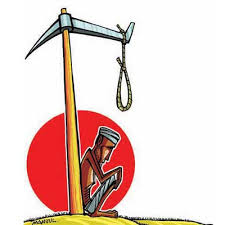
^‘ksrdjh vkRegR;k* gh Hkkjrh; lektke/khy ,d Qkj eksBh leL;k
Eg.kwu vkt leksj vkyh vkgs- [kÚ;k vFkkZus Hkkjr ns’kke/;s ‘ksrdjh oxkZyk txkkpk
^iks’khank* EgVys vkgs- ‘ksrdÚ;akP;k ukokus ^t; toku t; fdlku* vlk ukjk fnY;k
tkrks- Hkkjr gk d`”khiz/kku ns’k vkgs vls xokZus EgVys tkrs- v’kk lektke/;s
‘ksrdÚ;kaP;k vkRegR;k gksrkr gh [kjh fparsph] fparukph o la’kks/kukph ckc
laokZdfjrkp vkgs- vkti;Zar Li”V >kysY;k vkdMsokjho#u Hkkjrke/;s lokZr tkLr
vkRegR;k gks.kkÚ;k jkT;ke/;s egkjk”Vª jkT; vxzslj vlqu R;ke/;s egkjk”VªkP;k
fonHkZ foHkkxke/;s gs izek.k lokZr tkLr vkgs- R;ke/;sgh ;orekG ftYgk gk laiq.kZ
Hkkjrke/;s ‘ksrdjh vkRegR;sP;k ckcrhr izFke Øekadkoj vkgs- gh ckc vkfFkZd
fodklke/;s vxzslj vl.kkÚ;k egkjk”Vªkdfjrk fuf’prp Hkw”kukog ukgh [kkyhy vkdMsokjo#u
fonHkkZrhy ‘ksrdÚ;akP;k vkregR;sph fLFkrh Li”V gksbZy-
VOL- 2, ISSUE- 1, PUNE RESEARCH TIMES (ISSN 2456-0960) JIF 2.07
TIMES
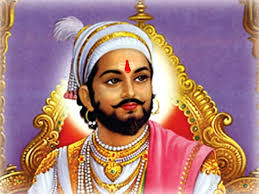
fganoh LojkT;kph LFkkiuk dj.kkÚ;k N=irh f’kokthuh
fotsrk ;k ukR;kus dsysyh dkefxjh vf}rh; Lo:ikph gksrh- R;kpizek.ks R;kauh
fuekZ.k dsysyk jkT;dkjHkkjgh oSf’k”V;siq.kZ gksrk- R;kaP;k iz’kkldh;
n`”VhdksukeqGs o vaeykr vk.kysY;k lq/kkj.kkeqGs R;kauk ekuoh bfrgklkr gksÅu
xsysY;k Js”B ;ksX;rsP;k iz’kkldke/;s x.kys tkrs- N=irh f’kokth egkjktkaps ‘ksrh
fo”k;d /kksj.k dY;k.kdkjh gksrs-
VOL- 2, ISSUE- 1, PUNE RESEARCH TIMES (ISSN 2456-0960) JIF 2.07
TIMES
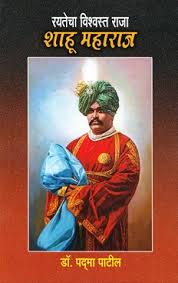
19 O;k “krdkrhy
izfl/n O;Drhe/;s uoizorZd Eg.kwu ekuys tk.kkjs jkt’khZ “kkgw egkjkt ;kaps uko
vR;ar lUekukus ?;kos ykxrs- dsoG 48 o’kkZpk thou izokl dj.kkÚ;k jkt’khZ “kkgwpk
tUe 26 tqyS 1874 rj e`R;w 6 es 1922 jksth >kyk- 2 ,fizy 1P894 yk flagkluLFk
>kysY;k jkt’khZ “kkgwP;k drZcxkjhpk dky[kaM dsoG 28 o’kkZpk gksrk- la;eh]
/kkMlh] fnynkj] duokGw] O;fDreRokps /kuh vlysY;k jkt’khZ “kkgwP;k dkGkrhy lekt
vf”kf{kr] vKkuh] :<hoknh gksrk- vlk lektO;oLFksr
txrkauk R;kaP;koj ;qjksi [kaMkrhy jktdh; vkfFkZd o lkekftd cnykapk izHkko
gksrk- º;k izHkkokeqGsp vkiY;k laLFkkukrgh lkekftd o vkfFkZd cny ?kMowu
vk.k.;kps R;kauh Bjfoys- ekxlysY;k lektkps mRFkku dj.kkjk] cgqtukapk vkfFkZd]
lkekftd o lkaL—frd fodkl dj.kkjk vkn”kZ jktk] QqYksph
ijaijk iq<s pkyo.kkjk yksdjktk] vk/kqfud egkjk’Vªkph mHkkj.kh dj.kkjk
jkt’khZ “kkgw egkjktp R;kaP;k ckcr ;k le gk vlsp Eg.kkos ykxsy-
VOL- 2, ISSUE- 1, PUNE RESEARCH TIMES (ISSN 2456-0960) JIF 2.07
TIMES
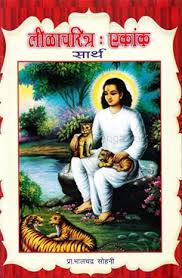
yhGkpfj=*ph Hkk”kk Qkj lk/kh]
lksih o ljG vlwu ;k xq.kkrp frps lkSn;Za ,doVys vkgs- f’kok; frP;kr ,d izdkjpk
ftoari.kk vlwu rh ;knodkGkrhy cksyh Hkk”ksps Lo:i ;FkkFkZi.ks nk[kfors- R;krgh
^,dkd*ph Hkk”kk Qkjp xksM okVrs- ;kps dkj.kgh m?kM vkgs- Lokeh ^eÚgkVh rjh
vukoj cksykr vlfr* v’kh pØ/kjkaph dhrhZ gksrh o ^,dkd*pk cjkplk Hkkx R;kaP;k
rksaMpk vlY;kus R;kph Hkk”kk lgtp lqanj mrjyh vkgs- ^yhGkpfj=*pk ^,dkd* gk Hkkx
Hkkf"kd okM~-e;n`"Vîkk le`) vkgs- Hkk"ksr ftoari.kk vkgs- ^,dkd*
Hkkxkr lkekfld ’kCn ;kstuk dsysyh vkgs- R;keqGs okD;kyk vFkZ?kurk izkIr
>kyh- ÚgLo&nh/kZ o vuqLokjkpk LoSji.kk vkgs- lacks/kukpk okijgh dkgh
fBdk.kh vk<Grks- fojkefpUgs Eg.kwu ,dk[kkyh ,d v’kk mH;k fnac};kpk okij
vkgs- HkwrdkGklkj[kh fnl.kkjh Hkfo”;dkGkph :is vkgsr- okD;jpuk lk/kh] ljG]
lksih] vkVksi’khj vkgs- ygku ygku okD;s vR;ar vFkZiw.kZ vkgsr- okD;jpuk v—f=e
vkgs- Hkk"ksr ,d izdkjpk dkSVqafcd okrkoj.kkpk] Hkko&Hkkoukapk xkssMok
tk.korks- rlsp iz’uksÙkjs fdaok laokn vfr’k; LokHkkfodi.ks jaxfoyk vkgs- R;kr
—f=erk dksBsgh fnlr ukgh- okD;jpuk furkar lqanj vlwu okpdkP;k MksGîkkaiq<s
,d izdkjph fp=kRedrk] vxnh vFkZiw.kZi.ks lkdkjyh tkrs- ^yhGkpfj=*ph Hkk”kk okDizpkjkauh
le`) vkgs- R;kapk ^,dkd* vkdkjkus ygku vlyk rjh R;ke/;s Hkk”ksps okDizpkjoSHko
tk.kors- EgkbaHkVkalkj[;k ,dfu"B HkDrkus furkar HkfDrHkkokus lkdkjysyh]
HkfDrjliw.kZ jpuk vkgs-
VOL- 2, ISSUE- 1, PUNE RESEARCH TIMES (ISSN 2456-0960) JIF 2.07
TIMES
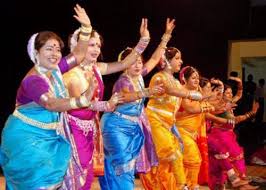
thou tx.;kph i)rh] jhr] ijaijk ;kapk lekos'k laLd`rh ;k
ladYiuse/;s d¢yk tkr¨- euq"; gk laLd`rh fuekZ.k dj.kkjk Ák.kh vkgs-
laLd`rh gh ekuokph Lor%ph fuÆerh vkgs- laLd`rhph O;k[;k d¢oG tSfod] lkekftd
Çdok eu¨oSKkfud vk/kkjkoj dj.ks v'kD; vkgs- v'kkosGh laLd`rhph O;k[;k]
y¨dlaLd`rh Eg.kts dk;\ laLd`rh vkf.k y¨dlaLd`rh ;kaph xq.koSf'k"VÓs d¨.krh
vkgsr gs ikg.ks vko';d Bjrs-
tls laLd`rh vkf.k y¨dlaLd`rh ckcrhr vkgs- rlsp fyf[kr lkfgR; o y¨dlkfgR; ;k njE;kugh vkgs- y¨dlkfgR; gs fyf[kr lkfgR;krwu osxGs ekuys dh] y¨dlkfgR;kpk vkf.k R;k ledkyhu vl.kkÚ;k y¨dlaLd`rhpk vH;kl dj.ks vkSfpR;kps Bjrs- y¨dlaLd`rhps ÁfrÇcc t.kw y¨dlkfgR;ke/;s iMys vkgs gs ekU; djkos ykxrs- y¨dlaLd`rh vkf.k y¨dlkfgR;ke/;s ;s.kkÚ;k Á;¨x:i y¨ddyk ;kaph fpfdRlk dj.ks gk ;k ys[kkpk mÌs'k vkgs-